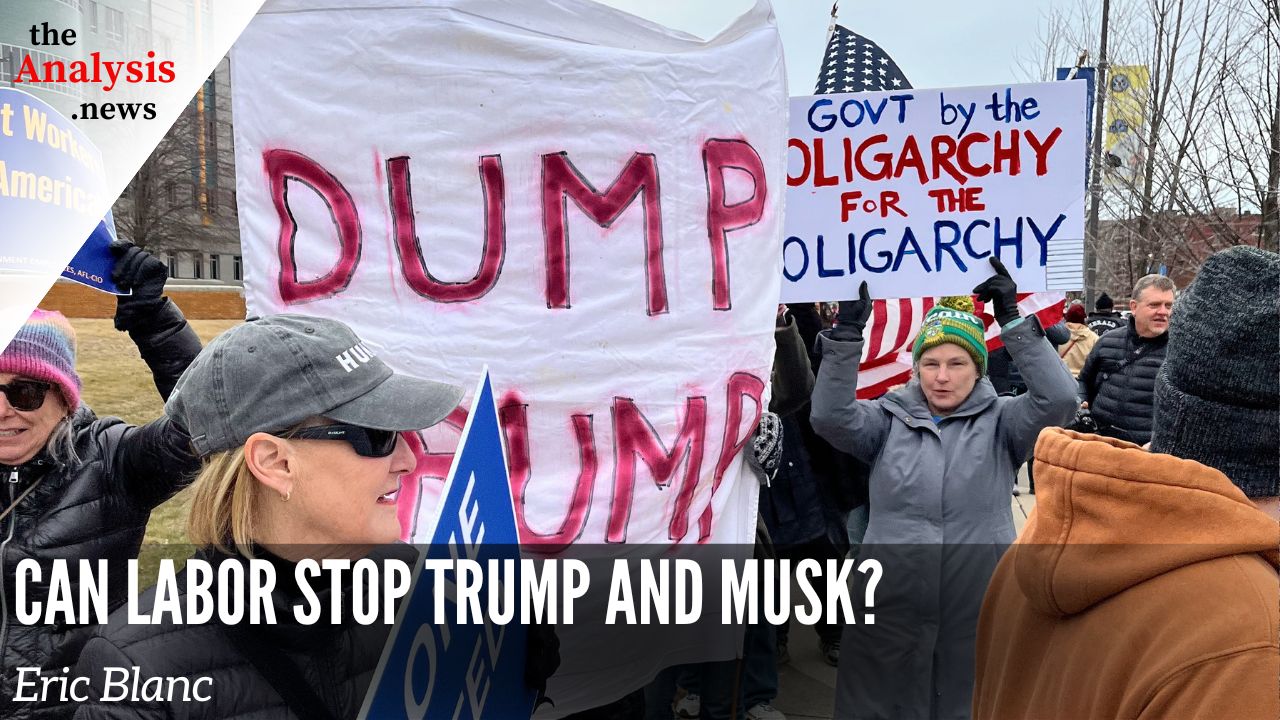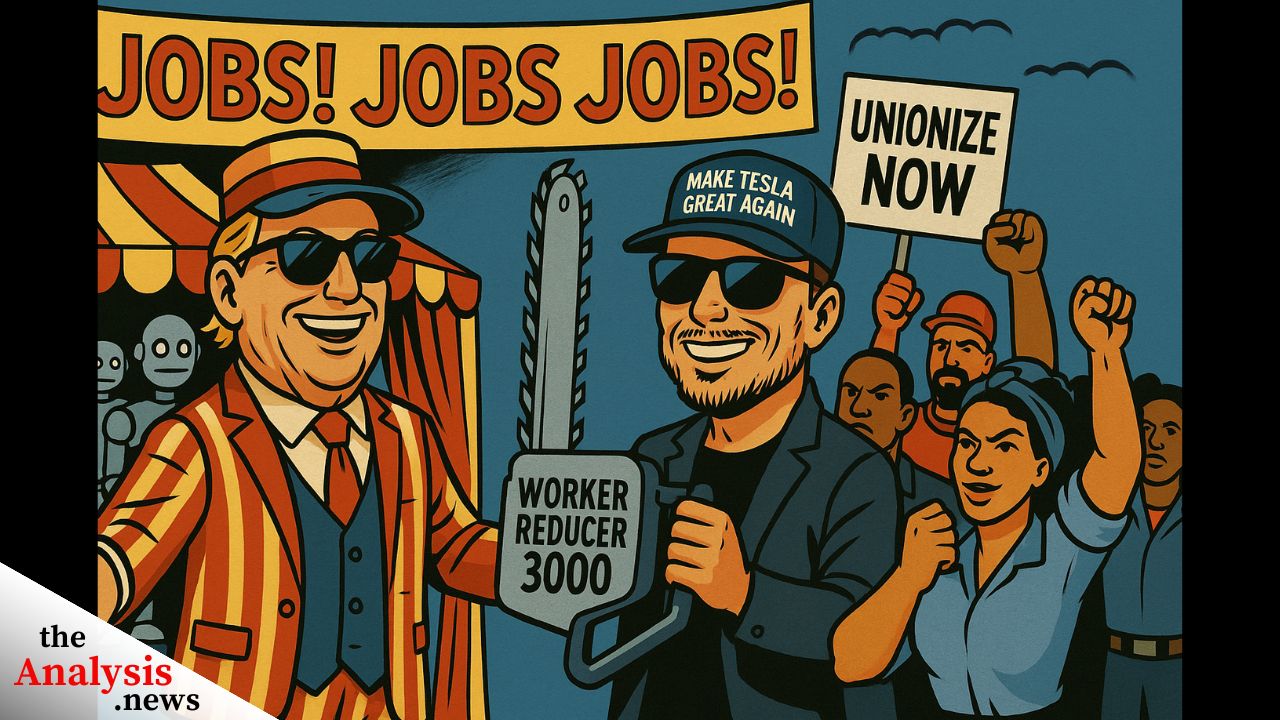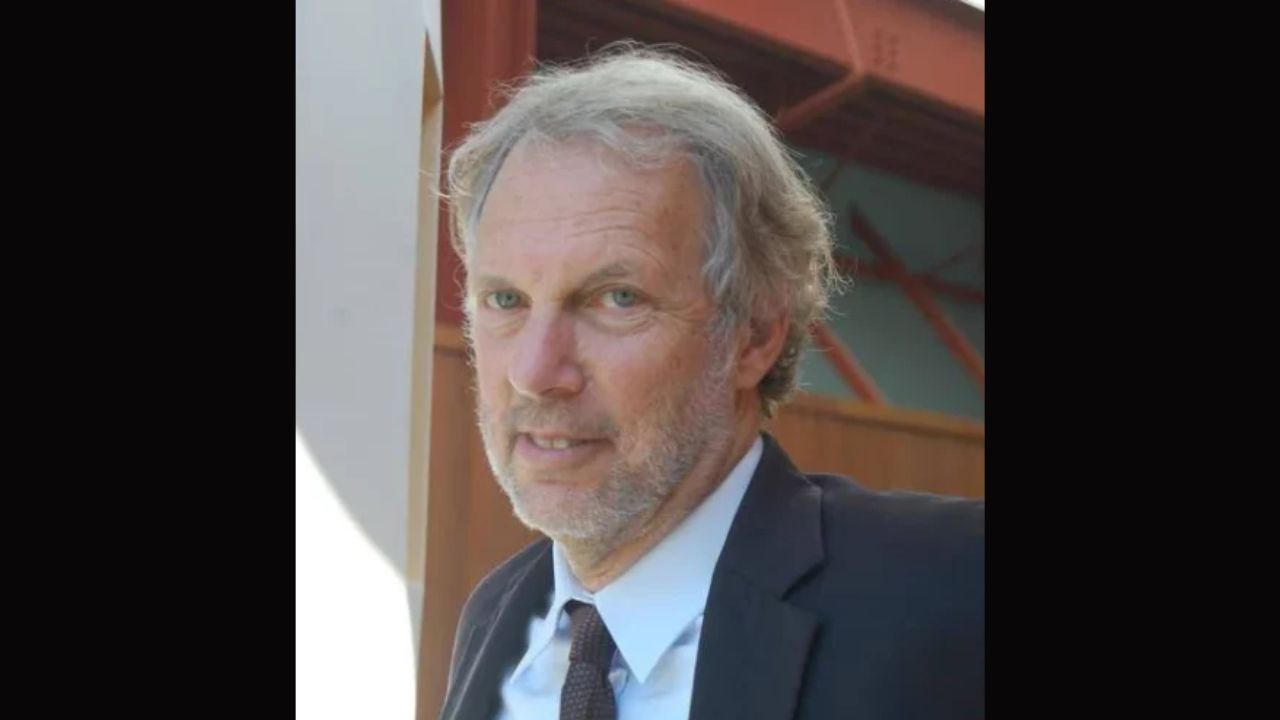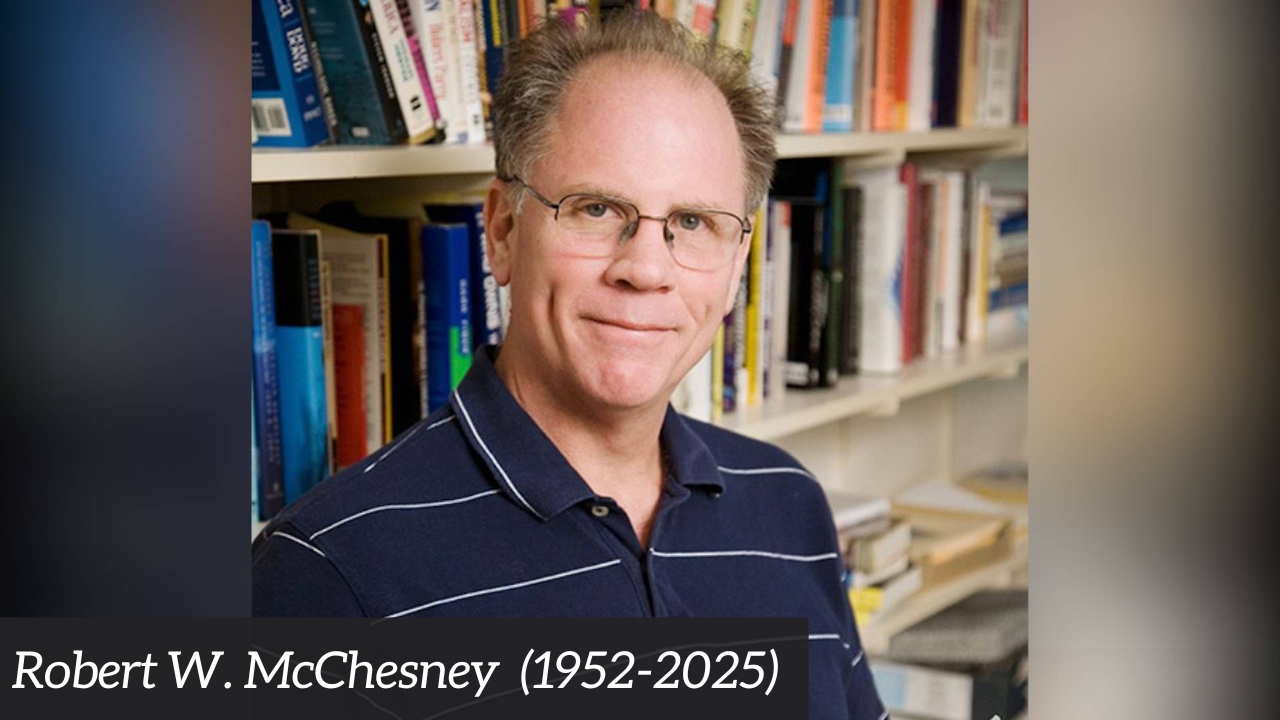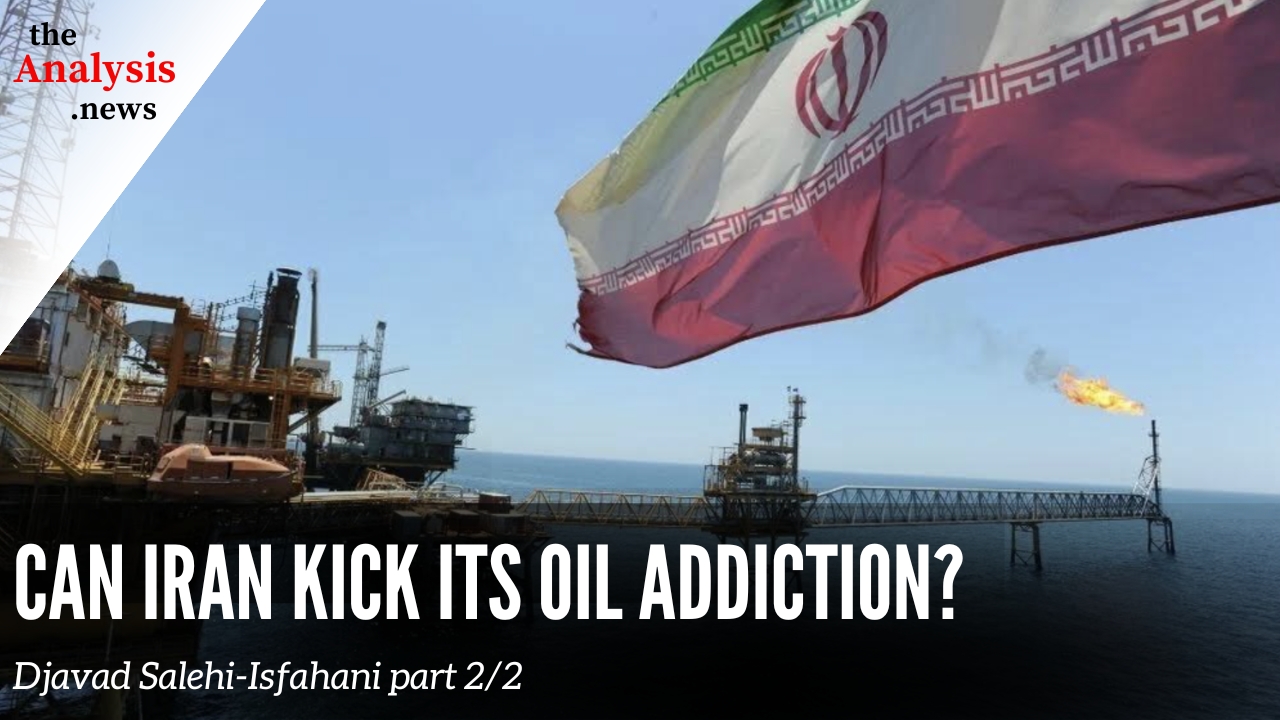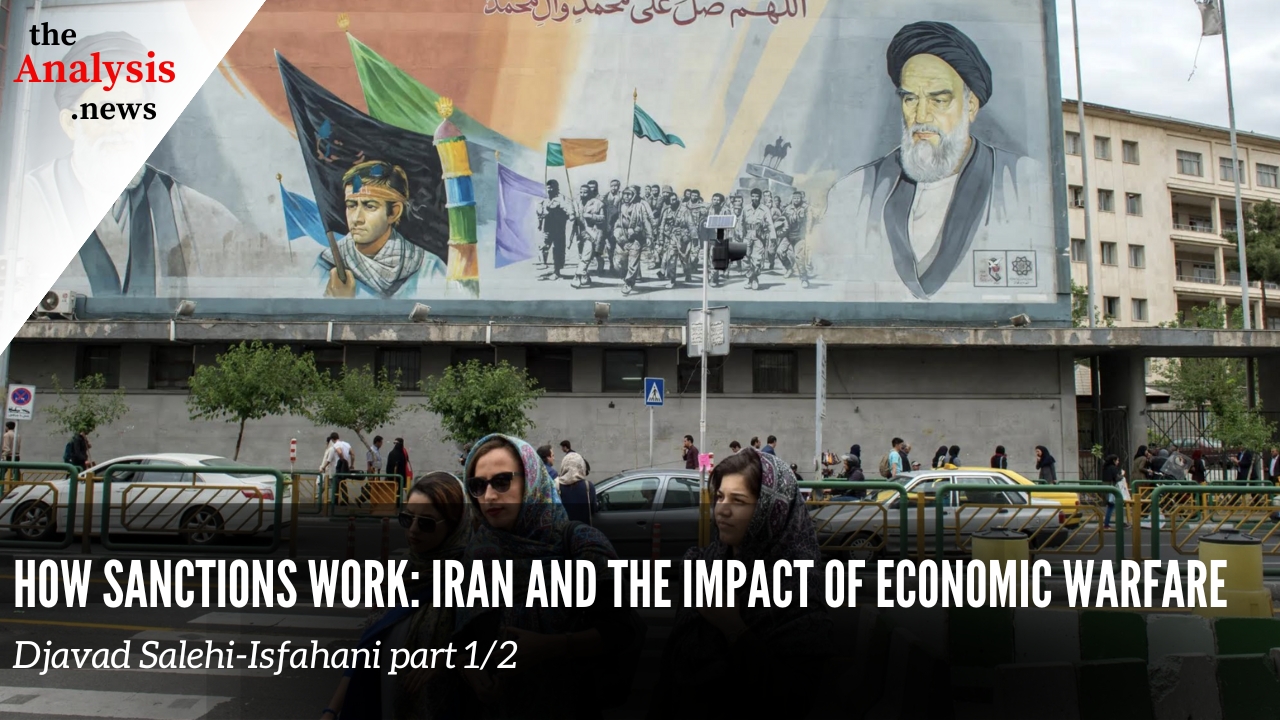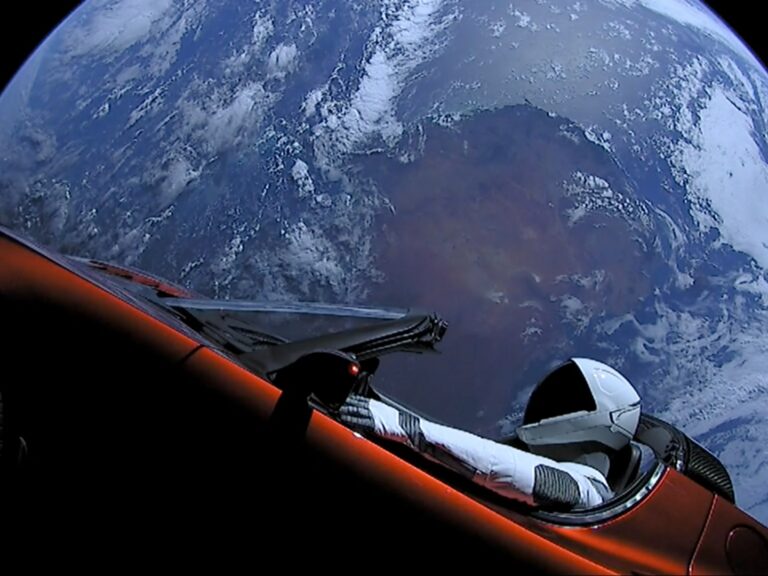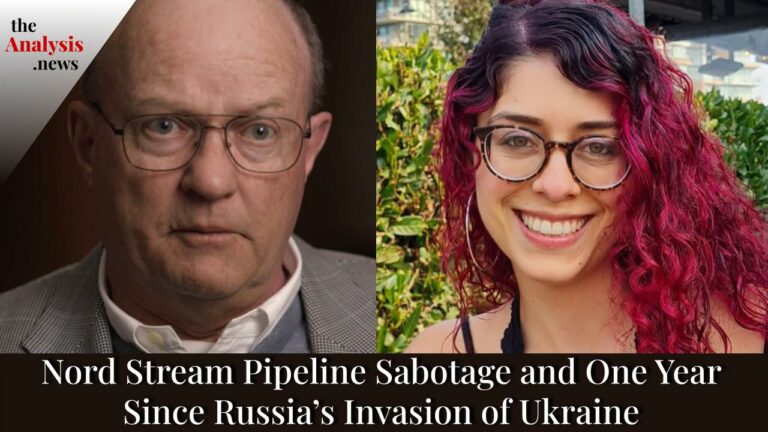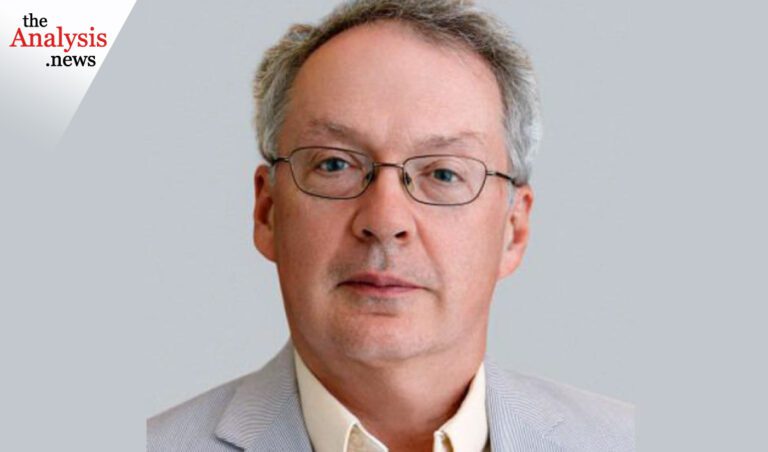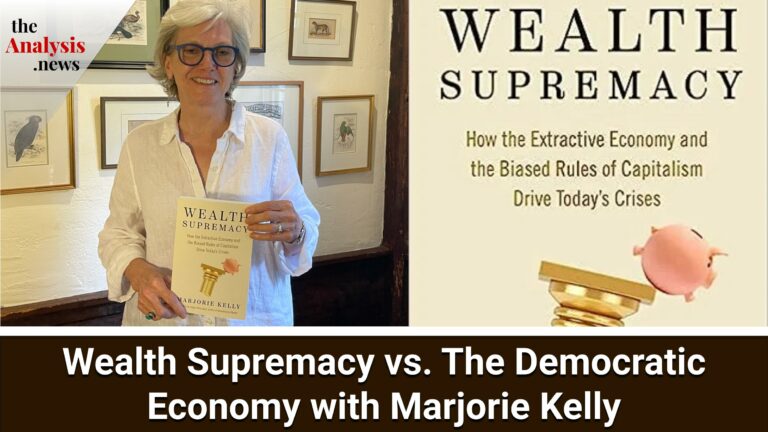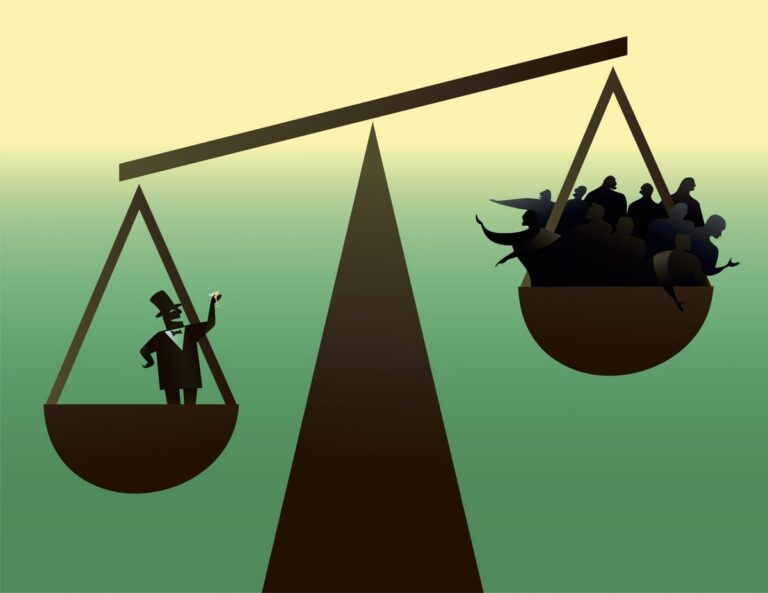In November 2024, Anura Kumara Dissanayake’s National People’s Power (NPP) coalition won a two-thirds majority in Sri Lanka’s general elections, marking a historic win for the Sri Lankan left. NPP’s victory came at a time of prolonged economic crisis exacerbated by the crushing terms of Sri Lanka’s IMF agreement. Political economist Dr. Devaka Gunawardena traces the factors leading to Sri Lanka’s economic woes and how international sovereign bonds (ISBs) held by private equity firms such as BlackRock constitute a large segment of Sri Lanka’s debt. Given the government’s recent private creditor debt restructuring agreement, can the NPP still deliver on its campaign promises of wealth redistribution and reversing austerity?
How the Left Won Sri Lanka – Devaka Gunawardena Pt. 2/2
Talia Baroncelli
You’re watching theAnalysis.news, and I’m Talia Baroncelli. Today, I’ll be speaking to political economist Devaka Gunawardena. We’ll be speaking about the National People’s Power Coalition in Sri Lanka and whether this left-wing government will be continuing on with IMF restructuring or making a departure away from neoliberal politics.
If you’d like to support the work that we do, you can go to our website, theAnalysis.news, and hit the donate button at the top right corner of the screen. Make sure you’re on our mailing list; that way, all of our content gets sent straight to your inbox. You can like and subscribe to our YouTube channel or listen to us on Spotify or other streaming services such as Apple. See you in a bit with Devaka Gunawardena.
Joining me now is Dr. Devaka Gunawardena. He is a political economist and research fellow at the Social Scientists Association in Sri Lanka. He completed his Ph.D. in Anthropology at the University of California in Los Angeles. He recently wrote an excellent article together with Ahilan Kadirgamar called The Sri Lankan Left’s Long Road to Power. Thank you so much for joining us today, Devaka. It’s really great to have you.
Devaka Gunawardena
Thank you very much, Talia. I’m glad to be on.
Talia Baroncelli
I wanted to speak to you about the political opportunity for the left right now in Sri Lanka. In September, Anura Kumara Dissanayake was elected President, and his National People’s Power Coalition was able to get a two-thirds majority in November in the parliamentary elections. They got 159 seats out of 225 seats, which was absolutely historic given that the left has not been in a majority position in government since the 1970s in Sri Lanka.
Before we get into what this means for coalition building in Sri Lanka, I wanted to ask you about the economic crises that Sri Lanka has been undergoing and the IMF Agreement, which it signed in 2022 after the Rajapaksa government declared bankruptcy.
Devaka Gunawardena
Yeah, absolutely. Where you begin in explaining the economic crisis definitely depends on your political perspective. Initially, when the crisis unfolded with the COVID-19 pandemic, a lot of the establishments in Sri Lanka focused on the tax cuts by the Gotabaya Rajapaksa administration in 2019. They argued that this created a fiscal deficit that was unsustainable and that, essentially, the country got into this very unfavorable economic situation. But actually, there’s a lot more to it than that.
Essentially, what happened is that Sri Lanka, because of the pandemic, lost a lot of its main foreign exchange earners, that was tourism and migrant workers’ remittances. Eventually, they recovered a few years down the line, but it was severe enough. Tourism essentially went to zero that year in 2020. Sri Lanka was downgraded by international credit rating agencies, and it was locked out of capital markets.
Again, this is where we need a bit more of the prior history. If we go a little bit further back to say the end of the Civil War in 2009, it was won by Gotabaya’s older brother, Mahinda, and at a great, huge, tremendous human cost. Tens of thousands of civilians died. It was a brutal end. But Rajapaksa proclaimed the beginning of a new phase of development. Again, a lot of people assumed he would be much more statist, much more harkening back to the older traditions in terms of Sri Lanka’s economic policy. His administration really pioneered the use of sovereign bonds.
They had already actually initially released a sovereign bond in 2007, but after 2009, it was just a wave. There was also a huge wave of speculative capital, people coming in to invest in luxury real estate. The whole country’s skyline practically changed, especially in Colombo. There were all these roads, ports, and airports that were being built.
Again, in the Western media, you may have heard this framed as a Chinese debt trap. But actually, it was much more about the sovereign borrowing because Rajapaksa went to these capital markets where they were dominated by Western institutional investors, firms like BlackRock and other hedge funds. Sri Lanka was paying exorbitant interest rates on these loans, and they weren’t really doing anything with it. You’re talking 7-8% in some cases on some of these bonds.
After 10 years, those investors who had purchased the bonds that Sri Lanka issued essentially recouped their investment. They had practically double what they had invested. Sri Lanka was forced to pay these really high interest rates as a developing country precisely because of these credit rating agencies. It’s really a much bigger institutional matrix, although this is not to absolve the Rajapaksas of accountability for corruption and all the other brutal things that they did, but it is definitely part of a systemic global phenomenon.
Just to give you an example, I was at a conference last year in Ghana, and they had mentioned that Ghana started issuing Euro bonds in 2007. Again, right around the same time or during the global financial crisis, all this capital went to these “emerging markets” like Sri Lanka. But then COVID happened, all these other issues happened, and all that capital came flooding back to the West. Countries like Sri Lanka that had borrowed suddenly found that they were in a very, very bad situation.
We can get more into the history, and I’m sure as we go further along, we will talk about the opening of the economy in the late 1970s because that also contributed to this whole process. But if you talk to a lot of, I think, the establishment and the policymakers here, they’ll say, “Sri Lanka had very good growth rates for however many decades.” But again, we have to look at the structural conditions and how they changed.
In the late 1970s, when Sri Lanka opened its economy, the IMF, for example, and the World Bank were more than happy to accommodate the country’s deficits. In fact, the country’s fiscal deficit increased after liberalization. It went way up because they were spending more on big projects like the Mahaweli Dam. But eventually, the IMF said, “Look, you got to pursue more austerity measures. We want you to undertake privatizations.” All of that had been going on, but of course, the Civil War was also occurring. It was tough for Sri Lanka to really undertake these “big bang reforms.” But after the war, ironically, it was when all this capital came in that Sri Lanka actually became very economically destabilized. That’s what really put the country on the path towards a crisis.
Talia Baroncelli
Could you speak a bit more about the taxation system that was in place and what Gotabaya Rajapaksa was doing at the time. There’s been some criticism of whether he was taxing the upper classes enough or taxing the working and middle classes too much and putting too much pressure on them. What is your take on those particular policies?
Devaka Gunawardena
My take is it definitely didn’t just begin with Gotabaya. He exacerbated it. He made it worse, for sure. There had already been a shift away from redistributive taxation from the late 1970s onwards. If you look at the graph, there was a stagnation in revenue and a decline in revenue so that eventually, by about the 2010s, it was roughly maybe 12% of GDP, and the public spending was about 20%. Comparatively, these are very small amounts because, really, there should have been much higher taxation over the previous decades, especially of the rich and especially of the upper middle class.
I think what happened really is that there was a shift, a fundamental shift away from these kinds of redistributive mechanisms because Sri Lanka, again, started looking for money from abroad. That was the main thing. The idea is the money is going to come in from elsewhere, so we don’t really need to worry so much about making sure that the wealthy, the corporate investors, all of them pay their fair share of taxes.
In fact, one of the country’s primary export sources were these garments or have been these garment manufacturing enterprises. But in the zones in which they operate, they practically pay, I don’t know what the exact amounts are, but they practically pay no tax because of all these concessions and holidays. The official corporate tax rate is extremely low. I think it used to be around 14%.
You have this broad shift in where the revenue comes from. Because Sri Lanka ended up borrowing more abroad, commercially, especially, they had to pay a much higher interest rate. That’s really where the crisis came from.
Gotabaya, of course, reduced the tax on what you call the value-added tax on goods. Again, what people pay at the shop, whatever it is, it’s not a direct tax. It’s an indirect tax. But that is where the bulk of Sri Lanka’s revenue really came from. About 80% has been in indirect taxes and only 20% in direct taxation. I think this is a much broader pattern of how the opening of the economy contributed to the shift away from redistributed taxation and, ultimately, to more commercial borrowing.
Talia Baroncelli
I’m assuming that a lot of those garment companies that you’re referring to are transnational companies as well. They’re paying very low taxes, but a lot of the wealth that they’re amassing isn’t actually being funneled through Sri Lanka, but it’s going to the West, essentially.
Devaka Gunawardena
Yeah, the open economy, as we call it here, that started from the late 1970s onwards, it was really built on the backs of the garment workers, the plantation workers, and the migrant workers. They are the people who earn the country’s foreign exchange. As you said, these are transnational companies, and ironically, many of them are actually Sri Lankan, but they have expanded their operations abroad to take advantage of cheaper labor costs in places such as Bangladesh and Ethiopia. Even though they started in Sri Lanka, actually, they’re now expanding abroad. The whole point is that they pay far less tax. They’ve benefited from very low wages among Sri Lankan workers. Now, in this situation where you also have the West raising its protectionist barriers, it’s tariffs, and all of that, there’s not going to be a sudden boom in export demand. I think that was the myth of liberalization. It was, “Okay, you guys, you might be paying less tax, the corporates and all that, but don’t worry, we’ll attract more capital from abroad, we’ll attract more investors, and eventually, they’ll develop the country.”
Famously, J. R. Jayewardene, the President who unleashed liberalization on Sri Lanka, he said, “Let the robber barons come.” He said, “Let them come. We want these investors.” Well, in a way, they did.
Talia Baroncelli
When was that? In ’79 or so that he said that, I think.
Devaka Gunawardena
Yeah, exactly. Late ’70s. Yeah, exactly. He won in ’77, but really the expansion began in ’78. I don’t know when exactly he said this, but it’s a great quote because I think it’s very revealing of the sentiment and the ideology, this trickle-down ideology. They’ll bring their investments, they’ll develop the country, and then we’ll get more export revenue. Before you know it, we won’t even need to worry about redistribution or this taxation. Of course, none of that panned out. Again, initially, they blamed the Civil War, which was understandable. But then, even after the Civil War, the capital that came into Sri Lanka was much more heavily focused on real estate and luxury projects—none of these things actually produced things that the country could export.
Talia Baroncelli
My next question before we get into the NPP and the coalition that they formed is the actual declaration of bankruptcy under Rajapaksa in 2022. You’ve already spoken about the external creditors and the high interest rates that Sri Lanka was paying on these bonds. Some people have said that Rajapaksa didn’t actually have to declare bankruptcy in that moment and that there were potentially other funding sources that he could have tapped into to facilitate paying back these creditors. Could you shed some light on that and whether you maybe agree with that or not? Who would the other potential funding sources have been?
Devaka Gunawardena
Yeah, absolutely. The Rajapaksas didn’t do themselves any favors. Once they were in this crisis, they really screwed things up. They absolutely mismanaged the economy. In fact, in 2021, as many people know now, there was a ban on chemical fertilizer overnight. They claimed it was so that Sri Lanka could go green and embrace organic agriculture. But really, it was because they were trying to conserve foreign exchange for imports of fertilizer. There was no plan, and they completely undermined the food production, which the country needed right at that moment, especially when you have to save on imports; you don’t want to have to bring in rice from abroad. In fact, Sri Lanka previously had achieved almost full self-sufficiency in rice production by the early 1980s. Gotabaya completely undermined that. They really mismanaged the economy. Still, I think the underlying impulse, which was necessary in that moment was to say, “Look, this is a major crisis. We now have growing food insecurity among people, especially working people. We need to now prioritize our imports. We are not going to just import unnecessary things, even though, again, we may all want that, especially middle-class consumers may want that in that moment. The reality is it’s a crisis, but we need to have a plan.”
They didn’t have a plan. What they did instead was they continued to allow imports, continued to allow everything into the country. They spoke, again, vaguely about self-sufficiency and about food production. They didn’t actually do that. In fact, as I said, they made it much worse with this ban on fertilizers. In addition to that, they were trying to engage in currency swaps with other countries. Bangladesh, for example, because they have a lot of export earnings precisely because of things like their garment industry, they were able to swap Rupees for dollars, and like that, there were all these currency swaps going on. The reality is that the country had already reached the precipice. Now, what really pushed it over was this default. But I agree that the default itself was not necessary. In fact, it was a very bad idea.
See, Sri Lanka, that year in 2022, had a repayment, I think, of about a billion dollars by July of 2022. They defaulted in April. Months before the deadline, they defaulted. It was clear that there was a process that was being engineered behind the scenes. I would argue that there should be a forensic investigation of what actually occurred in that period. By defaulting, all of a sudden, Sri Lanka was at the mercy of the IMF and the creditors. Once you default, you have no leverage. You’re done. Your trade and financial mechanisms, everything gets screwed up.
In fact, Japan, I think, also stopped all their development projects, obviously, when Sri Lanka defaulted. This put more pressure on people who were earning incomes from all these other construction projects in the off-season. They may be rural laborers or other folks who engage in construction. All of that stopped after the default. The industrial sector and the construction sector really contracted, and it exacerbated this whole depression.
Now, again, I’m not saying that the Rajapaksas were doing anything to actually avoid default. In fact, they accelerated it. But I think the rhetorical framing, a lot of the economists at the time were saying, “We need to default so that we can get food on the table,” because this was around the time of these massive queues for essential items. It really obscured the fact that with this IMF Agreement, these terms were going to be so difficult, so onerous, that even if the food eventually did become available again, the price had skyrocketed.
In fact, right around the time Sri Lanka defaulted, it devalued the rupee by about 40%. The central bank, under a new governor, increased the interest rates by almost double or over double. All these small and medium enterprises went bankrupt. The cost of everything doubled or tripled. But again, middle-class consumers, all that, the people relatively insulated, maybe they can afford fuel. But what’s the point if half the country is starving and if you have a poverty rate that’s doubled from 12 to 25%, according to the World Bank’s own estimates?
Like that, I think there is a lot more work that needs to be done. I personally think it was a premature default. I use that word very specifically, premature, given that in those couple of months, what else could have been done to secure a little bit more leverage or at least develop an alternative plan that didn’t simply rely on the IMF. Because again, once Sri Lanka was at the mercy of the IMF and the external creditor, it had no more leverage.
Talia Baroncelli
Based on what you’re saying, it sounds like this premature default was, in a way, shifting Sri Lanka under the umbrella of the IMF rather than looking for other funding sources which potentially could have come from China or India. What were the challenges there with seeking other funding from other foreign countries?
Devaka Gunawardena
Yeah, absolutely. There’s a lot of geopolitics, and I won’t comment on the specifics because I don’t know about all the potential deals that could have been negotiated. But it’s clear that I think India, along with the other Western countries, were in lockstep saying, “Look, you got to go to the IMF.” India technically extended this lifeline at the height of the crisis so that Sri Lanka could buy essential imports. But the reality is that from a policy-making point of view, I think they were firmly in lockstep with Europe and the U.S., and all saying, “You got to go to the IMF.”
Now, China, of course, is an interesting case. Like I said, I’m highly critical of this whole debt trap narrative. But the reality, too, is that China has its own interests, and they benefit in their own ways from situations like these. For example, after the default, after all this talk, even of a fire sale came about, Sinopec, China’s main fuel distribution enterprise, came into the country to buy up pumping stations that were previously under a national monopoly.
Again, I think it’s interesting to see how at certain levels, the global picture looks like it’s a contest. U.S. versus China or Europe versus China. But when you look at countries like Sri Lanka, I think, honestly, everyone comes to make a profit. I don’t think there’s any real differentiation. I think geopolitically and economically, everyone’s coming to see how they can benefit from this crisis. It’s unfortunate. But the reality is that despite decades of talk of development financing and all of that, it really hasn’t come through. The World Bank, for years now, has been saying, “We need to increase concessional financing to poor countries.”
But the other problem, too, and again, this is part of the puncturing of the narrative, the myth of Sri Lanka’s growth story, Sri Lanka was designated as a middle-income country, so it couldn’t access all of that concessional aid. Eventually, it was unable to access that. It’s ironic because, during the height of the crisis, all these policymakers started saying, “We should downgrade Sri Lanka from middle to lower income.” Now, what does that tell you about your development model if, one decade, you’re saying, “Hey, we’re on the move. Sri Lanka is rising,” or in a broader context, “Africa is rising, all these countries are rising.” Then the moment a financial crisis comes along, it’s like, “Okay, we got to downgrade now because we can’t afford to borrow anymore. We need concessional aid.”
Whether countries like China are experimenting now, I know, through the New Development Bank and all, I think the results remain to be seen. But overall, the main issue, I would argue, is that domestically, there was hardly any appetite for the real changes that Sri Lanka needed, which includes not just redistributive taxation, but a wealth tax. All these folks who had bought up all these luxury apartments, luxury vehicles, what about that? Before you start going abroad looking for money, why not also ask, “Okay, where is the money distributed in the country itself? There’s extreme levels of inequality here.” If you’re saying, “Okay, well, we need to borrow money from abroad,” before you do that, I would argue you first need to look at the situation of the wealthy here. That would be my argument.
Talia Baroncelli
The IMF Agreement signed by Sri Lanka required, as you already mentioned, socializing the costs, things like the fire sale of public assets, putting pressure on working and middle classes. It was in this context that Dissanayake’s NPP was able to get a two-thirds majority. Now that the NPP is in a leadership position and has a majority, could you also shed a bit of light on how they were able to draw support from various segments of the population, from different ethnic groups and from different classes?
Devaka Gunawardena
Absolutely. The first thing I just want to clarify, it’s a separate point, but I know that folks who don’t want to hear an alternative view, they’ll often seize upon what they would argue are inaccuracies or the IMF never said that; the IMF never said this. Technically, they will say, “Oh, the IMF never said you need to engage in a fire sale.” What are you talking about? They’re actually telling you to increase social spending. You guys are actually spending less than what the IMF is requiring.
Let me bottom line this. The IMF’s primary surplus target– what that means is the balance between revenue and expenditure is so, I think, burdensome that in the middle of a depression, that means when the economy is literally contracting, you’re also telling the government to contract its budget. And that is disastrous.
From the time of John Maynard Keynes, economists figured out that if not only our private investors are pulling away, but the government is pulling away as well, where’s the money going to come from? People are not going to invest in that state of uncertainty. We have seen these results. Even though they’re now talking about a recovery, Sri Lanka is severely underperforming the pre-crisis economic trajectory.
I want to be very clear that I’m not saying, oh, the IMF, they’re saying you should do this, that, and the other. What I’m saying is the structural conditions make it practically impossible to pursue any other course other than austerity. That’s what it is. It’s austerity. Then, with that came this government, this neoliberal government that was, of course, super happy to try and please the IMF. They, of course, were more than willing to talk fire sale and whatever else they could throw at them. But again, I think everything was completely unrealistic and dependent on extremely faulty macroeconomic projections. That, of course, has been verified. That has been discussed by many people, including former senior economist at the IMF, Peter Doyle, who has given presentations on this matter relating to Sri Lanka about how extraordinarily unrealistic and burdensome the IMF primary surplus targets are. I would direct people to that if they want more information.
Now, as for the NPP, I think the NPP is a project, first and foremost, to differentiate its chief constituent party, the JVP, from its past. Now, the Janatha Vimukthi Peramuna, or People’s Liberation Front, the JVP as it’s known, had its origins in a youth revolt, basically, in the 1970s. In 1971, they engaged in an insurrection. Then again, in the late 1980s, they had another far more brutal and bloody insurrection, and the state, of course, used death squads and paramilitaries to suppress it. The JVP had a very bloody past.
By 1994, they had reentered the parliamentary democratic mainstream, and they rebranded essentially as a legitimate political party. They still had a lot of this Sinhala Buddhist nationalist rhetoric. They were all for ending the war with a military solution. They were all gung-ho against what they viewed as Western meddling. They were extremely nationalistic. But it’s funny because after the war, as I told you, the Rajapaksas had consolidated power, and suddenly, the JVP realized, oh, this is bad. They started to become much more critical of the Rajapaksa and their tendency towards authoritarianism. Before they knew it, they had picked up a base among the middle class and, actually, among professionals, people looking for a “non-corrupt” alternative. But still, they had this lingering association with violence and insurrection.
By, I think it was 2019, if I’m not mistaken, they had begun this coalition, the National People’s Power, NPP. They’re practically the driving force, but there are smaller civil society organizations and other groups; I think there’s a Lawyers’ Collective in there, and they all work together, but it’s primarily under the leadership of the JVP.
Now, I’m not saying all this to arouse suspicion. I’m not in any way implying, oh, the JVP is going to go back to its violent past, which there was a lot of that red menace fear-mongering in the run-up to this election, especially. But I’m just saying that, actually, its class composition even changed. They drew a lot more from middle-class support. They started trying to win over investors. That also changed in the way of their priorities. They became a lot more willing to accommodate the existing neoliberal economy. That will come up, I’m sure, when we discuss where they’re headed now. They essentially tried to moderate their image.
But still, you have to ask; it’s crazy to think that in 2019, Anura Kumara Dissanayake ran for president in that election, too. In the presidential election of 2019, he only got about 3% of the vote. Five years later, he had already zoomed to over 40 or whatever the first preference vote was. Then, as you said, in the parliamentary election, which was held in November, they won a two-thirds bumping majority. This was a party that had three seats in the previous parliament. To go from 3 to 60% of the vote in the parliamentary election in one electoral cycle, it’s unprecedented.
I think a lot of people were inspired by that because they saw that as a rejection of the old system, definitely a rejection of the old political class, which had been dominated by Sri Lanka’s two main parties. Just like the U.S. has Democrats and Republicans, Sri Lanka has the Sri Lanka Freedom Party and the United National Party. Then they had a bunch of offshoots, but essentially, they’re all coming from the same two camps. Whereas the NPP is this third force, unprecedented. Again, now they have the power.
But again, I think a lot of the explanation for that can come from two things. One is people’s frustration with austerity, with the economic crisis, but also this tremendous political opening that occurred with what they call the Aragalaya, the struggle in 2022. That’s when you saw all these folks flooding the presidential secretariat, the mansion. There are some iconic images of people in swimming pools. That really demonstrated the power of the people. I think that is also something that the NPP definitely benefited from.
Talia Baroncelli
That was part one of my discussion with Devaka Gunawardena. In part two, we’ll be discussing the opportunities and challenges facing the left in Sri Lanka. See you next time.
Podcast: Play in new window | Download | Embed
Subscribe Apple Podcasts | Spotify | Android | iHeartRadio | Blubrry | TuneIn | Deezer | RSS
Never miss another story
Subscribe to theAnalysis.news – Newsletter
Devaka Gunawardena is Research Fellow at the Social Scientists’ Association in Sri Lanka. He holds a PhD in Anthropology from the University of California, Los Angeles. He writes regularly for the DailyFT and Polity Magazine in Sri Lanka, in addition to publishing in regional fora such as The Wire and Economic and Political Weekly . His research interests include political economy, development economics, and social movements.

